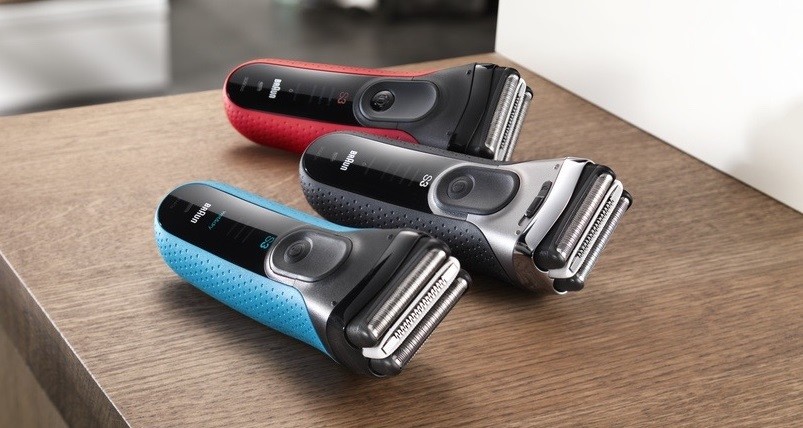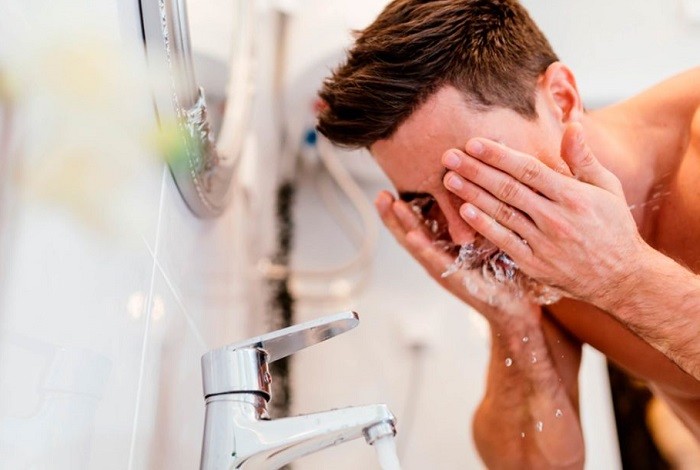Operating an electric shaver isn’t rocket science – but if it’s your first time using one, you may be wondering if it’s worth transitioning from traditional wet-shaving.
Though traditional shaving can be very enjoyable and satisfying, electric shaving offers the benefits of greater speed, convenience – and allows you to more easily experiment with different facial hair styles.
So, how do you actually use an electric shaver, properly?

Let’s walk you through the electric shaving process, step by step.
Step 1. Pick The Right Shaver

The first step is, of course, to choose a reliable electric shaver that’ll get the job done.
Get this part right and you’re 90% sorted.
Expect to spend a bit of time determining if a foil or rotary-head electric shaver is best suited to your skin type, and hair toughness and density.
You’ll encounter lots of features, including water-resistance, rechargeable batteries, self-cleaning – even integrated shaving cream dispensers.
No matter which features are important to you, read product reviews and choose a brand with a solid reputation for quality products – think Braun, Philips, and Remington.
Don’t scrimp and get something of low quality to save a few pounds – treat your new electric shaver as an investment – as a tool that will improve your grooming routine.
If you’re a bit tight on cash I advise you wait until you can afford something which is going to produce good results, and will last years. Honestly, as super cheap shaver can snag on hairs, cause serious irritation and leave patches of missed hairs.
Step 2. Preparation For The Shave

Okay, so you’ve chosen a high quality shaver.
That’s great!
But before you put that shaver to your face, you want to prep your face.
There are in-depth discussions in online forums about prepping technique – which soap, gel or cream is best, whether to lather by hand or with a brush, if pre-shave oil is necessary, shave wet or dry?… and on and on.
But here are the essential basics you want to pay attention to:
Splash your face liberally with warm water.
Doing so opens the pores and softens hairs, making them easier to cut – though a powerful, quality shaver will have no trouble cutting through dry hairs.
Dry your face, unless your shaver is sufficiently water-resistant, which it should be.
Using a pre-shave cleanser forces bristles to stand upright and pre-shave oil helps lubricate and cushion the skin.
Apply your gel, cream or soap lather of choice. Just be sure that your electric shaver is compatible with whatever you put on your face – you don’t want to clog the device!
The preparation process for using you electric shaver to wet shave is pretty much the same as if you were shaving with a manual razor.
If you choose to dry shave with an electric shaver I recommend that you at least wash your face first to remove head skin cells, soften hairs and make the shave cleaner.
Shave wet or dry, the choice is yours, providing your electric shaver is compatible with wet shaving.
Step 3. The Shave
After prepping, you can begin to shave – but hold on there!
As with a traditional razor, there’s no one “right way”.
You could shave with the grain, against the grain or across the grain – and what works for one man may not work so well for the next.
Until you have a technique down-pat, approach shaving slowly to avoid irritation.
Against the grain often gives the closest shave, but may chafe and redden skin; with the grain is often gentler, but may require more passes.
Shaving across the grain can be a good compromise – but prepare for a bit of experimentation, and remember that hair can grow in different and sometimes tricky directions – the neckline area is notorious for swirling hair growth patterns.
Tip: If you’re using a foil shaver, then shave against the grain. For rotary shavers, use a buffering motion.
Step 4. Post Shave Finish Off

When you’re done shaving, wash any loose hairs off your face and neck.
Some men find warm water removes residual lather better, but cool water may soothe the skin and invigorate the senses more.
Depending on your skin type, a simple astringent like witch hazel, an aftershave or post-shave moisturizer may be very soothing and will help replenish the skin.
Again, you’ll have to experiment a bit until you’ve found what works best.
Just like a normal razor, an electric shaver functions best and provides the closest, most irritation-free shaves when kept in good order.
Make sure the blades stay clean and sharp. If your device has replaceable blades or screens, make sure they get changed as necessary (often about once yearly, depending on the frequency at which you shave and the toughness of your beard.)
Electric shavers do feel and function differently than other types of razors.
Bear that in mind, especially if it feels (and looks!) like your skin isn’t happy with the new routine. It can take a little while – up to three weeks – for the face and neck to acclimatize to the moving parts of an electric shaver. Remember to start slowly, and avoid excess pressure.
Let the blades do the work. If you’re pressing hard, irritation will occur; if you let the shaver glide across in a few efficient passes, a smooth face awaits you!
